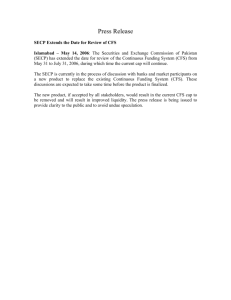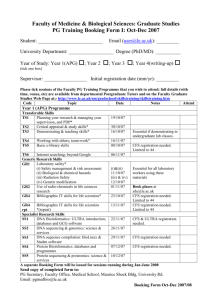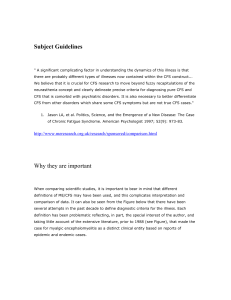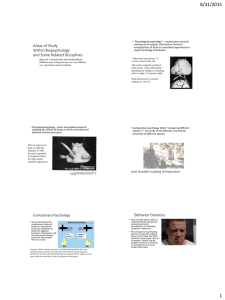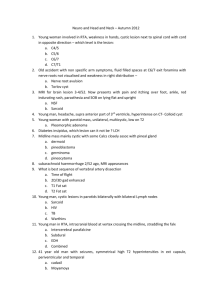exam 3 targeted review
advertisement
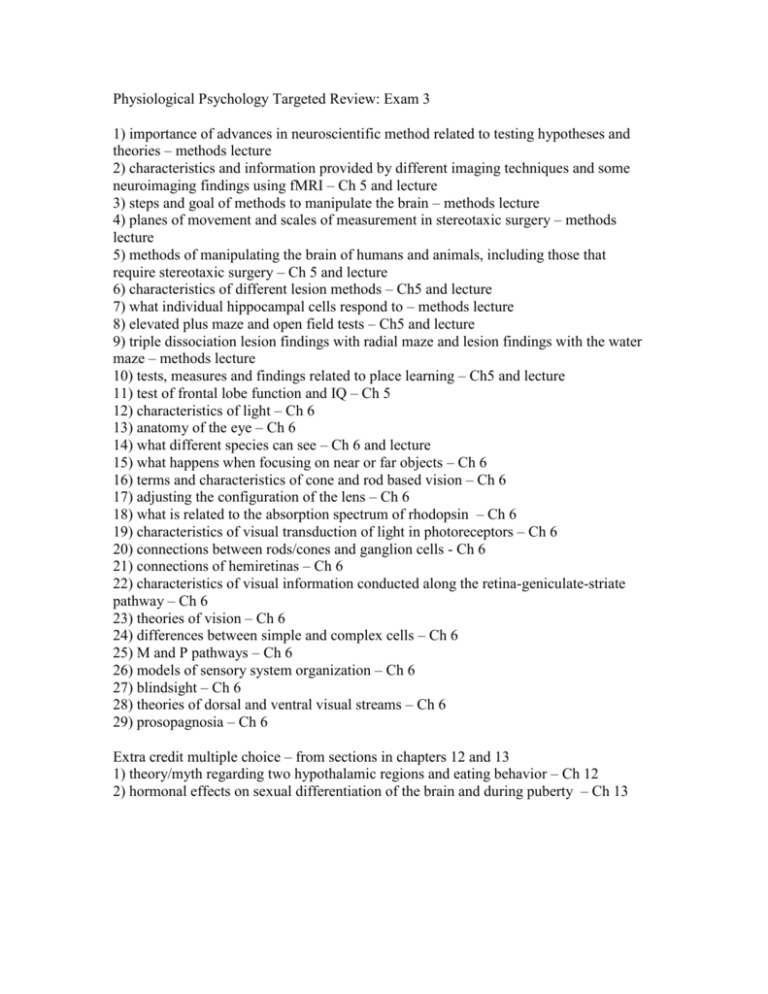
Physiological Psychology Targeted Review: Exam 3 1) importance of advances in neuroscientific method related to testing hypotheses and theories – methods lecture 2) characteristics and information provided by different imaging techniques and some neuroimaging findings using fMRI – Ch 5 and lecture 3) steps and goal of methods to manipulate the brain – methods lecture 4) planes of movement and scales of measurement in stereotaxic surgery – methods lecture 5) methods of manipulating the brain of humans and animals, including those that require stereotaxic surgery – Ch 5 and lecture 6) characteristics of different lesion methods – Ch5 and lecture 7) what individual hippocampal cells respond to – methods lecture 8) elevated plus maze and open field tests – Ch5 and lecture 9) triple dissociation lesion findings with radial maze and lesion findings with the water maze – methods lecture 10) tests, measures and findings related to place learning – Ch5 and lecture 11) test of frontal lobe function and IQ – Ch 5 12) characteristics of light – Ch 6 13) anatomy of the eye – Ch 6 14) what different species can see – Ch 6 and lecture 15) what happens when focusing on near or far objects – Ch 6 16) terms and characteristics of cone and rod based vision – Ch 6 17) adjusting the configuration of the lens – Ch 6 18) what is related to the absorption spectrum of rhodopsin – Ch 6 19) characteristics of visual transduction of light in photoreceptors – Ch 6 20) connections between rods/cones and ganglion cells - Ch 6 21) connections of hemiretinas – Ch 6 22) characteristics of visual information conducted along the retina-geniculate-striate pathway – Ch 6 23) theories of vision – Ch 6 24) differences between simple and complex cells – Ch 6 25) M and P pathways – Ch 6 26) models of sensory system organization – Ch 6 27) blindsight – Ch 6 28) theories of dorsal and ventral visual streams – Ch 6 29) prosopagnosia – Ch 6 Extra credit multiple choice – from sections in chapters 12 and 13 1) theory/myth regarding two hypothalamic regions and eating behavior – Ch 12 2) hormonal effects on sexual differentiation of the brain and during puberty – Ch 13
